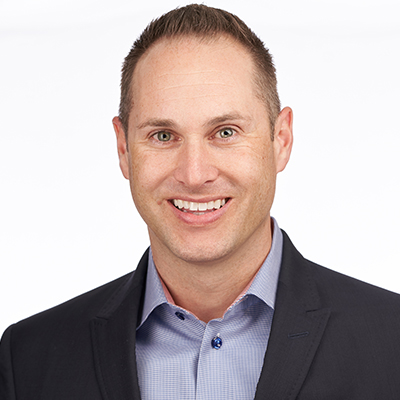A Tale of Two Markets – 2020 Construction Insurance & Surety Update
March 3, 2020
When it comes to the current states of the construction insurance and surety markets, it could be said that, “It is the best of times, it is the worst of times,” with a sharp nod to Mr. Charles Dickens, of course. Despite sharing similar clients and often working for the same parent companies, underwriters in the insurance and surety markets have experienced dramatically different results over the last few years.
Continued prosperity in surety has led to a booming soft market, while insurance markets have experienced a series of challenges that quickly led to a still-hardening market. We will attempt, in a brief manner, to address the key drivers of both markets in 2020, as well as offer constructive advice on how to navigate each.
Surety Market
In 2001, the surety industry paid out more money in claims than it had made in profit during the previous 100 years. While the recession at the time did cause a few contractors to fail, the main culprits were the massive failures of Enron and WorldCom, fueled in large part by lax accounting standards. What followed was a dramatic tightening of underwriting standards by sureties and a series of consolidation amongst the largest surety players. By 2005, the surety industry emerged more disciplined and, as a result, more profitable.
Since then, sureties have enjoyed their most profitable period to date. Historically low rates of contractor failure over the last 15 years, even during the Great Recession, have led to a natural relaxation of underwriting and extended credit limits. For a contractor that requires surety bonds in connection with its work, now is as good a time as ever to be asking for that credit.
… if your surety partner seems hesitant to write a bond, engage them more actively so you may determine their true comfort level.
This is not to suggest that surety has become a commodity freely given to anyone who can pay the premiums. As has always been the case, those who manage and cultivate their surety relationship will be in the best position to receive the strongest considerations. Therefore, our advice in a soft surety market is nearly the same as in a hard one; if your surety partner seems hesitant to write a bond, engage them more actively so you may determine their true comfort level. However, know that if your current surety relationship does not meet your needs in this market, the right broker partner can help you explore other available options.
Commercial Market
The construction insurance marketplace has hardened as we enter the new decade, and it appears this firming-rate environment may be around for a couple of years. Contractors will be challenged, and they should expect more underwriting questions and potentially a re-underwriting of their risk, narrowing coverage/new exclusions offered, and increasing rates for many lines of coverage.
How did we get to this point? The commercial insurance market is cyclical and has been in an extended soft market for the better part of the last 10 years. As contractors’ backlogs rebounded from the Great Recession, many enjoyed work programs that reached new heights. During this time, the insurance industry had excess capacity and relaxed underwriting discipline in an effort to write new premiums. The competition among carriers forced improved terms and conditions within policies and a constant downward rate trend – all good for contractors!
The best construction risks look outside traditional insurance to alternative solutions, such as group captives…
However, competition and capacity can only go so far. 2017 and 2018 were two of the most expensive years for natural disasters and catastrophe claims on record. Sprinkle on top the ever-growing jury awards on the casualty side, and the insurers’ loss reserves are impacted. Underwriting changes are forced to take hold, and the market begins to swing in the other direction.
Rates have bottomed out and are steadily rising across all coverages, except for workers’ compensation. The pivot point for contractors’ insurance across the Western U.S. was in 2019, as we saw general liability, excess liability, and property rates creep upward following consistent deteriorating loss trends among auto insurance during the preceding few years.
Contractors need to find ways to reduce risk within their businesses to elevate themselves above their peers and stand out. Some options that improve operational performance and reduce risk include:
- Investing in an elite subcontractor-prequalification process
- Creating a robust quality control/quality assurance program
- Tightening contracts with appropriate contractual risk transfer or reducing vehicle fleet size
- Moving to auto allowance (if applicable).
The best construction risks look outside traditional insurance to alternative solutions, such as group captives, where they join other high performing contractors. These programs allow them to be insulated from some (not all) cyclical market swings, have a built-in peer network with other contractors, and generally have a greater say in how they impact their overall total cost of risk within their programs.
Advice for the Future
Hard market or soft, insurance or surety, our counsel remains ever consistent. Proactively approach your broker to discuss renewals and projects, giving ample time for active marketing of your account if necessary. Additionally, take time to review your contracts for challenging requirements and reach out as necessary to help with negotiations. The best contractors will survive this insurance market cycle, take advantage of the current surety market, and be staged to capitalize on the right opportunities. Expect your broker to help mitigate difficult situations and find the best available solution. If you’d like a second opinion, or some creativity in how to navigate the world of surety or construction risk, we’re always here to help.
The views and opinions expressed within are those of the author(s) and do not necessarily reflect the official policy or position of Parker, Smith & Feek. While every effort has been taken in compiling this information to ensure that its contents are totally accurate, neither the publisher nor the author can accept liability for any inaccuracies or changed circumstances of any information herein or for the consequences of any reliance placed upon it.





